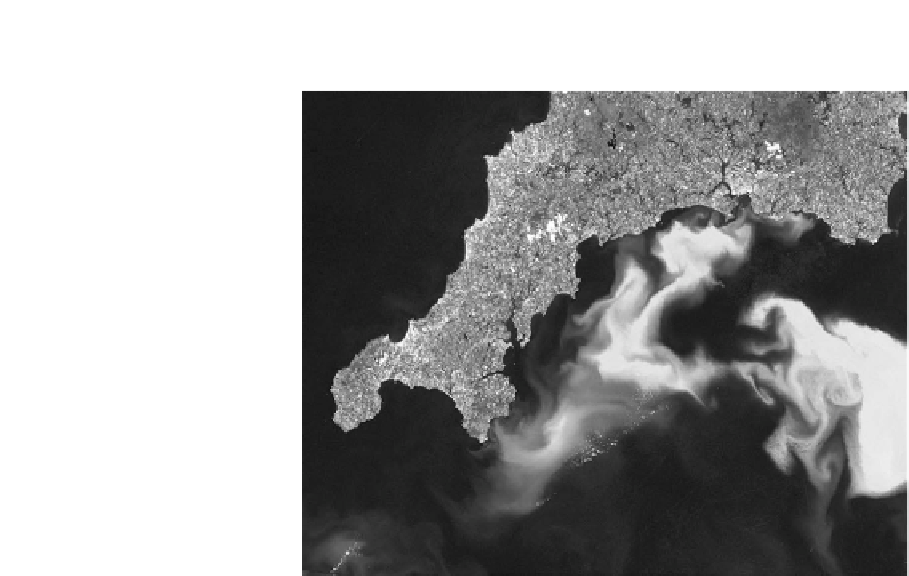Geoscience Reference
In-Depth Information
Figure 5.12
See
colour plates version
.
A bloom of the coccolithophores Emiliania huxleyi in the
western English Channel, June 1999. Image Courtesy NASA/JPL-Caltech.
then we might expect flagellates or dinoflagellates to be able to have some control on
their position in a turbulent environment with K
z
<
10
3
m
2
s
1
. Tidal flows in shelf
seas can drive turbulent diffusivities well in excess of this value in the bottom layer of
the water column. However, in the thermocline we typically find K
z
10
5
m
2
s
1
,so
swimming could be a useful trait. An observational assessment of different plankton
swimming capabilities against the turbulent environment has demonstrated how
the interaction between swimming speed and turbulence controls the contrasts
in the vertical distributions of different plankton groups (Maar et al.,
2003
). Clearly
the vertical structure of turbulent mixing and the gradients in light and nutrient
resources are important considerations. In
Chapter 7
we will describe some examples
where motility can provide access to light or nutrients in a shelf seawater column.
Coccolithophores
The coccolithophores range between about 10 and 100
m in size, and are covered in
small calcite disks (coccoliths) secreted out of the cell (see
Fig. 5.11a
). The function of
these disks is not known, though blooms of coccolithophores have a substantial
effect on the scattering of light (Balch et al.,
1991
) and can raise surface water
temperatures by
m
1
C compared to adjacent non-bloom waters (Garciasoto et al.,
1995
). The most abundant coccolithophore is Emiliania huxleyi, which is frequently
seen to develop large blooms in stratified shelf waters during summer, as in
the example in
Fig. 5.12
. The coccoliths are very resistant to decomposition, thus
leading to the formation of limestones such as the White Cliffs of Dover, UK, and
∼



Search WWH ::

Custom Search